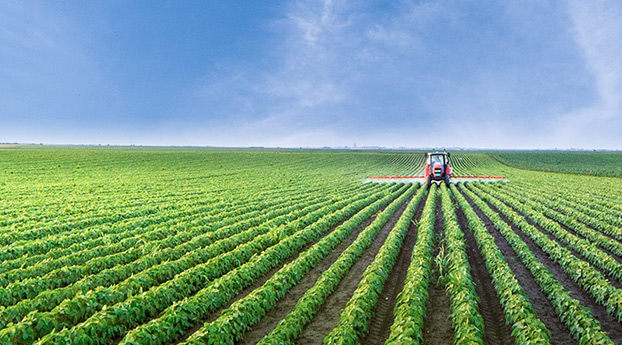Water intervention and the Construction of Chinese Water Safety Strategy System
Release time:2015-07-23 Views:311
In recent years, water shortage, water disaster, water pollution and other water security issues are increasingly threatening human life and health. This kind of non-traditional security makes "human" as an individual and "human" as a group fall into two major threats: water shortage and aquatic fear. In 1994, the United Nations Development Program warned in its Human Development Report that the damage to economy caused by water crisis was incomparable to any terrorist attack, and water security issues may cause serious conflicts and even threaten national security in the traditional sense. Therefore, it can be seen that it is of great significance to build a strategic guarantee system of water security to alleviate water shortage, avoid water disasters and prevent water pollution.
Connotation and development status of water body intervention
In order to reduce and prevent disasters, seek social stability and welfare, and alleviate and avoid the security threat caused by water problems, human beings have long tried to carry out various manual interventions on surface water, groundwater and atmospheric water to make it flow and distribute in the direction expected by human beings. For example, building DAMS to allow flood water to flow and distribute in safe directions, storing water that naturally flows and distributing it according to human needs, and building canals to divert water from fertile areas to dry areas. The four types of water conservancy projects are the most frequently used means for human intervention in water bodies to ensure water supply, exploit water benefits and avoid water hazards.
In 2011, the "No. 1 Document" made a decision on accelerating the reform and development of water conservancy, and elevated it to a height concerning the national economy and people's livelihood. This was the first time since the founding of New China that the CPC Central Committee had made a comprehensive and systematic deployment of water conservancy reform and development work. According to the national "12th Five-Year" water conservancy development plan, in order to ensure the safety of urban and rural water resources supply, a series of manual interventions will be carried out from 2011 to 2015, including the completion of the main construction of the first phase of the East and middle routes of the South-to-North Water Diversion project, the second phase of the East and Middle Routes project and the preliminary work of the West routes project combined with the optimal allocation and scheduling of the Yellow River water resources. China has promoted the construction of key water sources and trans-basin and regional water transfer projects in Central Guizhou, Pangduoh in Xizang, Qingshan in Liaoning, Hongling in Hainan, Xiaozhongdian in Yunnan, Xiaojinggou in Sichuan, Jinfoshan in Chongqing, Yintao in Gansu, Zhoushan in Zhejiang, Lijiang in Guilin, Nen into Bai in Jilin, Dathuang in Qinghai, and medium reservoirs in Southwest China. We will carry out preliminary work on projects to divert water from the Hanziwei River and the Yangtze River to the Nest River, to the Poyang Lake water conservancy complex, and to central Yunnan.
Intervention behaviors of surface water and groundwater represented by four types of projects including extraction, diversion, diversion and storage, as well as atmospheric water intervention behaviors represented by artificial rainfall and precipitation, can not only effectively alleviate water shortage, guarantee water supply, improve and balance uneven distribution of local water resources, and avoid water disaster risks. At the same time, it can harvest transportation, power generation, irrigation, tourism and other benefits. At present, with the water conservancy engineering construction technology becoming more and more mature, the control and reliability of water intervention has been greatly improved, and it has become the main strategy and main means of solving water security problem.
The importance of building Chinese water safety strategy system
Water safety situation of our country is grim. At present, our country has 40\% of the population living in lack of water area, among which the Yellow, Huai, sea area and northwest inland serious water shortage area accounted for 35\%. The consumption level of water per capita is very low, only one third of world average. Historically, our country suffers from water disaster for a long time threatening, but also is the most severe disaster area where water, drought disaster is in the world. From 1900 to 2011, the drought disaster with a history of records occurred first in the world. At the same time, China's drinking water pollution has become increasingly serious. In 2010, the Ministry of Water Resources released a report titled "Practice and Exploration of China's Rural Drinking Water Safety Project Management", showing that more than 100 million rural people do not have access to clean drinking water. The trend of water safety in our country does not allow optimism. With the continuous growth of population, the development of economy and the improvement of social living standard, the demand for water in China is increasing day by day, but the total supply of water basically remains unchanged. In the long run, this will lead to a widening gap between supply and demand of water, increasing the likelihood of water crisis.
Water security is closely related to national security. Water security includes water resource security, water ecological environment security and water disaster avoidance, which affects many aspects of national security such as ecological security, economic security and social security. Water is the source of life, water shortage and water disaster will have an impact on people's life and health and normal life order, easy to cause mass panic and endanger social security; Water is essential to production. As an important factor of social production, the shortage of water resources will, to a large extent, hinder the normal production order, hinder the sustainable and stable development of economy, and then threaten economic security. Water is essential to ecology. Water pollution and water shortage will deteriorate the ecosystem and endanger ecological security.
Water security is the key link to sustainable development and construction of harmonious society. Water resource is an irreplaceable basic natural resource, which supports the maintenance, stability and development of a country's social economy and natural ecology. Water security under threat and difficult to guarantee will undermine people's survival and living order, threaten social stability and curb the country's long-term development. Therefore, the sustainable development strategy of our country must be based on the water safety guarantee and premise, and the construction of a harmonious society must be steadily advanced in the framework of water safety guarantee.
Construction of Chinese water security strategy system
Establish an overall wading safety management strategy. To balance the relationship between each sub-objective of water security, to coordinate the long-term and short-term costs and benefits of water security policies, and to coordinate the costs and benefits between local areas and larger space, it is necessary to establish an overall management strategy of water security. Only under the guidance of the overall water security strategy, can complementary and mutually promoting incentive policies, guarantee policies and regulatory policies be established, so as to achieve a truly all-round water security in a larger time span, a broader spatial scope and a more multidimensional social management field.
Develop new water resources. Expanding the source and supply of water resources and exploiting the huge reserve of glacier water and atmospheric water is an open source way to ensure the safety of water resources. At present, the development of water resources is mainly surface water and groundwater, and the glacier water, which accounts for 68.7\% of the total fresh water on earth, is seldom developed. With the continuous progress of water intervention theory and technology, and the diversification of development means, the exploitation of glacier water can be regarded as a new idea to alleviate the shortage of water resources and ensure the security of water resources. The seasonal distribution of atmospheric water directly affects the seasonal distribution of surface water. Therefore, the prevention strategy of water disasters and the protection strategy of water resources can be traced back to the source of precipitation, and the artificial intervention of the atmosphere can be carried out to adjust and balance the spatial and temporal distribution of surface water by means of artificial rainfall, rain promotion, rain displacement and hail suppression. To achieve the purpose of disaster reduction, prevention and protection of water resources security.
Strengthen international cooperation in the development and management of transboundary water resources. International cooperation on transboundary water resources is an effective means to avoid water disputes between countries and prevent water-induced armed conflicts. Among the boundary rivers shared by China and neighboring countries, 12 originate from China and are important sources of drinking water for China and neighboring countries. Any unilateral intervention in water bodies may trigger conflicts between countries and threaten national security. Therefore, it is necessary to formulate framework agreements for the joint development, utilization and management of water resources on the basis of the principles and principles of peaceful consultation and cooperation, so as to guide and regulate international cooperation in the development and management of water resources in transboundary waters.
To maintain the balance of water resources between regions in the country. Water resources balance between regions is the implementation and guarantee of water security in small scale space. Inter-provincial water intervention such as inter-basin water transfer and river damming will change the quantity distribution of upstream and downstream water resources and bring economic development opportunities and strategic resource reallocation. In essence, it is the redistribution of interests between local governments and people's living conditions and development resources between regions. It is not only easy to cause conflicts between local governments, but also easy to lead to the decline of people's living standards in some formerly well-off areas and affect social stability. Therefore, the water resources balance between regions must be considered before the implementation of water body intervention, and a reasonable water body intervention plan should be designed to prevent the water resources disparity between regions caused by human intervention. At the same time, a reasonable benefit compensation mechanism should be set up to coordinate and balance interests on the whole and maintain social harmony.
(Source: Guangming Daily by Lei Liping)

















